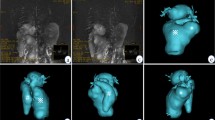Abstract
Patients with space-occupying lesions (SOL) were studied using cholescintigraphy and varying results found. In 24 cases of SOL of 40 patients studied, we observed: (1) the presence of focal defects; (2) displacement of the intrahepatic biliary tree; (3) blocking of the passage (stop) of radioactivity to the intrahepatic biliary tree. The first indication, the presence of focal defects, had a sensitivity of 0.81 and a specificity of 0.78. The displacement and radioactivity stop was less frequent, but more specific. This is due to the fact that cholescintigraphy permits the specific study of the biliary tree and its pathological alterations. In our patients, the diagnostic errors were due to extreme hepatic damage, which produced an unclear image of the liver parenchyma and the biliary tree. This is observed in complete obstruction and in some cases of cirrhosis. When signs of displacement and stop were closely associated with focal defects, the diagnosis of SOL was highly specific.
Similar content being viewed by others
References
De Schrijver M (1978) HIDA Manual: Vademecum of hepatobiliary functional scintigraphy. Solco Ed. Basel.
Loberg MD, Cooper M, Harvey E, Callery P, Faith M (1976) Development of new radiopharmaceuticals based on N-substitution of himino-diacetic acid. JNM 17:633–638
Pauwels S, Steels M, Piret L, Beckers C (1978) Clinical evaluation of Tc 99m-diethyl-IDA in hepatobiliary disorders. JNM 19:783–788
Pedersen SA, Øster-Jørgensen E, Schoubye J (1980) Hepato-biliary scintigraphy with 99Tcm and 99Tcm-sulphur colloid. Eur J Nucl Med 5:305–309
Reichelt HG (1978) Nuklearmedizinische Leber- und Gallenwegsdiagnostik mit dem Hepatropen, choloquilen Radiopharmaken 99mTc-Dathyl-IDA (EHIDA). Nuc Compact 9:18–27
Rosenthall L, Shaffer EA, Lisbona R, Pare P (1978) Diagnosis of hepatobiliary disease by 99mTc-HIDA cholescintigraphy. Radiology 126:467–474
Tijen HSLM, van der Pompe WB, Cox PH (1977) Technetium 99m labelled diethyl-acetanilidoiminodiacetate: a new hepatobiliary agent. Br J Radiol 50:735–739
Weissmann HS, Sugarman LA, Frank MS, Freeman LM (1980) Serendipity in technetium 99m-dimethyl iminodiacetic acid cholescintigraphy. Radiology 135:449–454
Wistow BW, Subraimanan G, Van Heertum RL, Henderson RW, Gagne GH, Hall RC, McAfee JC (1977) An evaluation of 99mTc labelled hepatobiliary agents. JNM 18:455–461
Author information
Authors and Affiliations
Rights and permissions
About this article
Cite this article
Scopinaro, F., Iorio, F., Flammia, M. et al. Characteristic cholescintigraphic images in space-occupying lesions. Eur J Nucl Med 7, 376–378 (1982). https://doi.org/10.1007/BF00255657
Received:
Issue Date:
DOI: https://doi.org/10.1007/BF00255657




